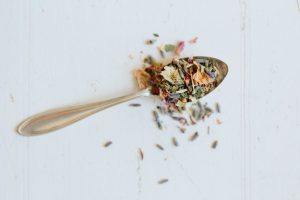The Naturopathic Co.

You're using an outdated browser. Please upgrade your browser to improve your experience.
Oestrogen dominance refers to having too much oestrogen, but it also points to progesterone deficiency.
For example, we can have too much oestrogen, but we can also have normal amounts of oestrogen and low progesterone (which is also therefore oestrogen dominance), so it’s important to understand the underlying hormonal imbalance.
Oestrogen Dominance is one of the main causes of low progesterone. Progesterone is needed to keep oestrogen levels in check.
There are different types of oestrogen – it’s a collective term used to describe the 3 types of oestrogen in women, which are produced at different phases of life:
Oestradiol is produced by the ovaries in women of childbearing age.
Oestriol is the main oestrogen produced in the placenta during pregnancy.
Oestrone is produced by the adrenal glands and fatty tissue.
Oestrogen levels also change according to where you are in your menstrual cycle, and also your stage of life. Oestrogen levels are highest in the middle of your cycle, and lowest during your period.
Oestrogen affects many parts of the body, and will likely cause issues when it’s out of balance, ranging from acne, constipation, menopausal symptoms, fibroids, weight gain, thyroid dysfunction, painful periods, irritability, to breast cancer.
The synthetic oestrogen found in the pill can damage gut bacteria and impair oestrogen detoxification. These contraceptives work mainly by preventing the release of eggs from the ovaries.
All oestrogens must be processed and detoxified through the liver and bowel. If the liver is burdened then oestrogen builds in the body. This is why alcohol causes higher blood levels of oestrogen.
Oestrogen levels can fluctuate from high to low in the years and months prior to menopause. Some symptoms include insomnia and hot flushes (deficiency); pain and irritability (excess).
Insulin resistance can cause an increase in oestrone which can in turn trigger polycystic ovary syndrome (PCOS).
Ostrogen stimulates mast cells to make more histamine, which then stimulates the ovaries to make more estrogen, causing a vicious cycle.
Don’t take hormonal birth control
Boost progesterone
Reduce alcohol consumption to avoid burden on the liver in order to successfully metabolise oestrogen
Eat vegetables for their beneficial phytoestrogen content, which helps to regulate oestrogen levels.
Maintain a healthy body weight to reduce the production of oestrone.
Reduce exposure to plastics that contain xenoestrogens (synthetic oestrogens)
Avoid inflammatory foods to reduce histamine production
Iodine down-regulates estrogen receptors, thereby decreasing estrogen sensitivity. Iodine is particularly helpful for breast symptoms such as tenderness or breast cysts. Iodine is toxic in high doses, so it’s important to talk to your naturopath about this option.
Calcium d-glucarate helps to detoxify oestrogen
menstrual irregularities (heavy periods, spotting, short cycles)
high anxiety, low mood
intense hot flashes, night sweats
weight gain
fluid retention
brain fog
sagging skin
thyroid issues
insomnia
Fibre
Fibre is important in treating oestrogen dominance, as a means to boost detoxification. Fibre helps improve your bowel movements to flush oestrogen through the body. Oestrogen and progesterone work in relation to one another and fibre can help reduce estrogen levels which will then raise progesterone.
Vitamin B6
Vitamin B6 is needed to synthesise hormones, and helps to keep hormone levels balanced. Foods rich in vitamin B6 are sunflower seeds, tuna, bananas, sweet potatoes, chicken, tofu, pork, pistachios, spinach, fish.
Vitamin C
Some research suggests that women who take vitamin C daily significantly increase their levels of progesterone. Foods rich in vitamin C are capsicums, citrus fruits, broccoli, brussel sprouts, kiwi fruit.
Zinc
Zinc is an important nutrient for progesterone. Zinc is found in foods such as cashew nuts and almonds, kidney beans, beef, oysters, seafood, pumpkin seeds.
From a naturopathic perspective, we use a variety of herbal medicines to treat oestrogen dominance. Make a time with your naturopath if you think you may have an oestrogen dominance issue.
Yvette is a qualified Melbourne-based Naturopath and Nutritionist, MINDD Practitioner, member of the Naturopaths and Herbalists Association of Australia, and Complementary Medicine Association. Yvette specialises in the treatment of conditions commonly affecting women and children, with a key interest in children’s digestive and neurological conditions, as well as women’s hormonal concerns, digestive issues, fatigue, anxiety, and skin concerns. Yvette consults in South Yarra, Melbourne, as well as Australia-wide via skype/zoom/phone. Book here.
Comments are closed.